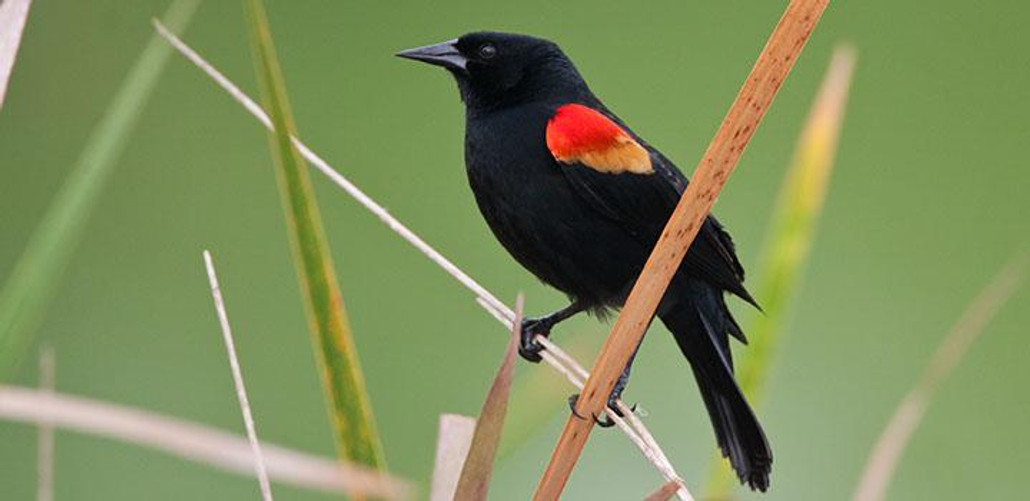
Red-Winged Blackbird
Posted by Grange Co-op on 7th Oct 2013
Male:Jet black with a red shoulder patch bordered by yellow. Pointed black bill.
Female and Juvenile:Heavily streaked brown bird with a pointed brown bill and white eyebrows. Immature plumage kept for one year.
 NESTING:
NESTING:
Female builds a cup nest of reeds and grasses lined with finer material placed usually in cattails, reeds or other marsh vegetation. 2-3 broods per year of 3-5 eggs that are pale greenish blue with dark markings.
FEEDING:
Eats insects, weed seeds and comes to bird feeders singly or in large flocks for a variety of seed including cracked corn, millet, and sunflower seed.
RECOMMENDED ROGUE SEED:
Rogue Deluxe Wild Bird Mix, Rogue Select Wild Bird Mix, Rogue No Waste, No Growth, No Mess Mix. Shop Wild Bird Food.
RECOMMENDED FEEDERS:
Hanging platform feeders, tube feeders, wood or plastic hopper-style feeders. Shop Wild Bird Feeders.
HABITAT:
One of the most widespread and numerous birds in Oregon. A partial to nonmigratory bird, it will move around the state to find food in winter. It’s a sure sign of spring when the Red-winged Blackbirds return to the marshes. During breeding season they reside in and around freshwater bodies of water with standing aquatic vegetation, including ditches and flooded fields. In migration and winter: dry agricultural fields and meadows.
OTHER INTERESTING FACTS:
Males hold territories of 1/8 - 1/4 acre, which they defend by singing from perches with wings spread open and red shoulder patches exposed. They can also conceal the red patch, showing only the yellow border. Males are polygamous, averaging 3 mates per breeding season. However, the females choose their mates. They form huge communal roosts in winter. Flocks of up to 100,000 birds have been reported. The male’s song is a loud, raspy “konk-a-ree” or “okaleee;” the female may give a “ch’ch’ch’ chee chee chee;” calls include a harsh, loud “check,” and high “tseert.”
COMPARE TO:
Brown-headed Cowbird is smaller, more iridescent, and has a brown head with no shoulder patches. Differs from all blackbirds due to the red and yellow patches on its wings (epaulets).
Would you like to attract birds to your yard? We’ve got a great selection of products to help you and your feathered friends get together. Shop our Wild Bird department now.
